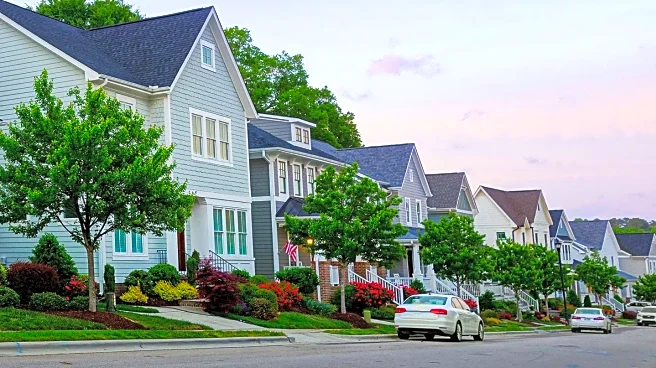What's Happening?
In Spartanburg, South Carolina, potential homebuyers are increasingly looking beyond urban centers due to high mortgage rates and unaffordable housing prices. According to data from Realtor.com's Cross-Market
Demand Report, the view share of active listings in various regions indicates a shift in buyer interest. Greenville, SC, leads with a 17.1% view share, followed by Charlotte, NC, at 7.5%. Other areas like Myrtle Beach, SC, and Columbia, SC, also show significant interest. The median listing prices vary, with Greenville at $385,335 and Charlotte at $438,500. This trend reflects a broader national pattern where home prices are normalizing but remain high, prompting buyers to consider more affordable areas, especially with the flexibility of remote work.
Why It's Important?
The shift in homebuyer interest from urban centers to more affordable regions has significant implications for the real estate market and local economies. As buyers seek homes in areas like Greenville and Charlotte, these regions may experience increased demand, potentially driving up local property values and stimulating economic growth. Conversely, urban areas may face challenges as demand decreases, affecting local businesses and services reliant on a dense population. The trend also highlights the impact of high mortgage rates on housing affordability, influencing buyer behavior and market dynamics. This could lead to policy discussions on housing affordability and interest rate management.
What's Next?
As remote work continues to offer flexibility, the trend of expanding home searches is likely to persist. Real estate markets in regions like Greenville and Charlotte may see continued growth, prompting local governments to consider infrastructure and service improvements to accommodate new residents. Additionally, the ongoing high mortgage rates may lead to further shifts in buyer preferences, potentially influencing national housing policies. Stakeholders, including real estate developers and local businesses, will need to adapt to these changes to capitalize on new opportunities and address emerging challenges.
Beyond the Headlines
The movement of homebuyers to less urbanized areas could have long-term cultural and social impacts, potentially altering community dynamics and demographics. As new residents bring diverse backgrounds and expectations, local communities may experience shifts in cultural norms and social structures. This could lead to increased demand for amenities and services that cater to a more varied population, influencing local governance and community planning.











